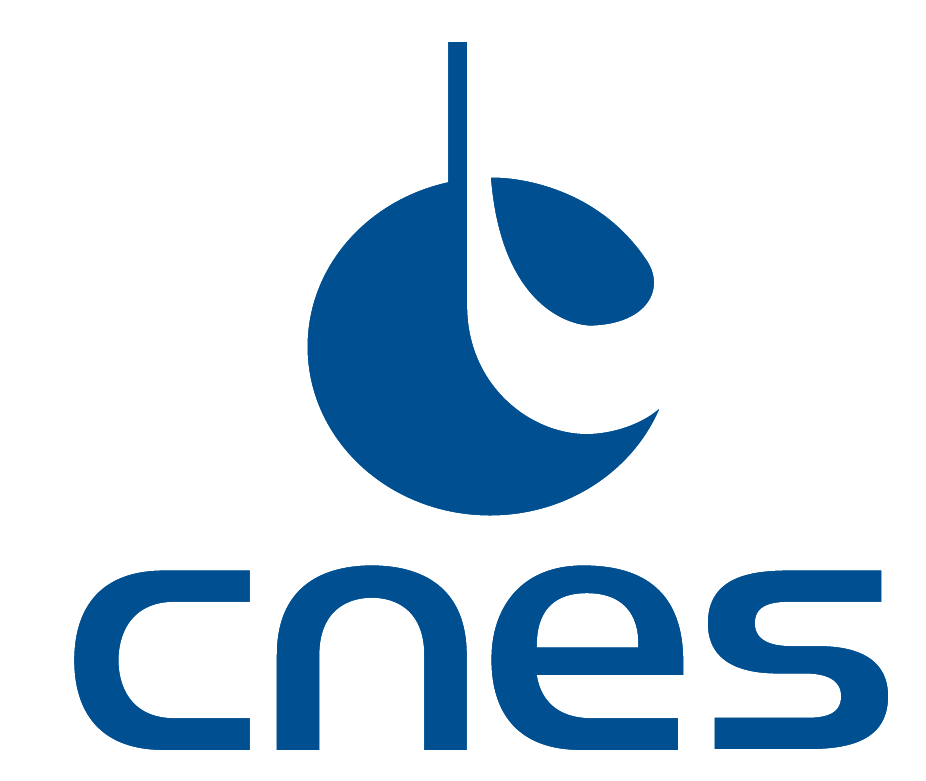Sessions d’observation ISM / ISM observation sessions
Chaque session comprend environ 3000 spectres de petits éléments de surface (~20×20 km2) observés les uns après les autres. Les lignes diagonales sont balayées par un miroir d’entrée mobile ; l’autre dimension spatiale est balayée grâce au mouvement relatif de la planète sous la sonde. Chaque pixel correspond à un spectre complet entre 0,77 et 3,16 µm acquis en une seule passe. Une session est acquise en ~20 min.
L’information représentée ici est l’altitude de la surface, mesurée par la profondeur d’une bande d’absorption atmosphérique (CO2 à 1.44 µm) corrigée des variations de géométrie. Les régions basses sont en bleu. Les courbes de niveaux proviennent des cartes altimétriques dérivées de Viking et Mariner 9 (modèle numérique de terrain de la Nasa) ; la projection sinusoïdale utilisée ici, qui conserve les surfaces, est le standard planétaire.
Les observations sont effectuées depuis une orbite équatoriale élevée (~9000 km, distance de Phobos), ce qui réduit la partie observable de Mars aux zones équatoriales et détermine la résolution ; toutes les grandes unités géologiques de ces régions ont été observées par ISM. Deux sessions à plus haute résolution ont été acquises depuis le péricentre d’une orbite elliptique au début de la mission.
Each session comprises ~3000 spectra of small surface elements (~20×20 km2) observed in sequence. Diagonal lines are spanned by a moving entrance miror. The other spatial direction is acquired by taking advantage of the planet rotation relative to the spacecraft. Each pixel corresponds to a spectrum ranging from 0.77 to 3.16 µm acquired in a single pass. Each session is acquired within 20 minutes.
The map above represents surface elevation, as computed from the depth of an atmospheric band (1.44 µm CO2 band) corrected from viewing geometry. Lower areas are in blue. Contours are derived from Viking and Mariner 9 (Mars digital terrain model) ; the sinusoidal projection used here (the planetary standard) preserves the areas.
The surface is observed from a high altitude equatorial orbit (~9000 km, Phobos distance), which reduces the visible areas to equatorial regions and determines the spatial resolution ; the major geologic units in these areas have been observed by ISM. Two higher-resolution sessions were acquired from the pericenter of an elliptical orbit at the beginning of the mission.
Cube-image principal sur Phobos à 700 m de résolution. Environ 400 pixels couvrent Phobos, ce qui représente 15% de la surface du satellite (hémisphère arrière externe). 200 autres pixels couvrent le fond de ciel, et ne sont pas représentés ici. Les données sont représentées en projection “image”, superposées à un modèle topologique de Phobos orienté comme l’était le satellite pendant l’observation (modèle de T. Duxbury, 1991, dérivé des observations Mariner 9 et Viking). La quantité représentée en couleur est le pourcentage de lumière solaire réfléchie par la surface (facteur de radiance). Elle dépend des propriétés de la surface et de son orientation ; en pratique elle est fortement corrélée à l’angle d’incidence réel (i.e. à la pente de la surface), ce qui implique que l’albédo varie peu et que cette région de Phobos est presque uniformément sombre.
Une autre session a été acquise quelques heures plus tôt, ainsi que quelques courtes observations. Toutes ces fenêtres sont étroites (un seul pixel de large) et certaines sont contaminées par la lumière réfléchie par Mars.
The main image cube on Phobos, at 700 m pixel size. About 400 spectra cover Phobos, which represents ~15% of the surface (external trailing hemisphere). Another 200 pixels cover the dark sky, and are not plotted here. The data are represented in “image projection”, and are superimposed on a topological model of Phobos oriented as Phobos was during observations (T. Duxbury’s model, 1991, from Mariner 9 and Viking observations). The parameter coded in color is the amount of solar light reflected by the surface (radiance factor). It depends on both surface properties and orientation. It is highly correlated to the incidence angle relative to the normal (ie. to the topographic slope) which implies that albedo is almost constant and this region of Phobos is uniformly dark.
Another session was acquired a few hours earlier, and several other short sessions exist. All are very narrow (one-pixel wide) and some are contaminated by Marsshine.
| Name | Date | Spectra | Window size | Estimated local time | Phase angle | Solar Meridian | Ls | Mars-Sun dist (au) |
| PAVonis | 08/2 | 2365 | 296 x 8 | 10:15-12:30 | 2.8° – 4.2° | 100° | 350.5° | 1.547 |
| BIBlis | 11/2 | 2189 | 274 x 8 | 13:00-14:50 | 2.7° – 4.1° | 100° | 352.0° | 1.551 |
| ARAbia | 21/2 | 2432 | 98 x 25 | 8:50-12:40 | 0.5° – 5.2° | 335° | 2.0° | 1.563 |
| DAEdalia | 27/2 | 3013 | 121 x 25 | 11:30-15:45 | 5.5°-10.1° | 165° | 4.5° | 1.570 |
| SYRtis-Isidis | 01/3 | 3005 | 121 x 25 | 8:50-13:20 | 1.7° – 6.3 | 270° | 5.9° | 1.572 |
| Valles Marineris | 07/3 | 3008 | 121 x 25 | 10:10-14:10 | 0.9° – 5.5° | 100° | 8.3° | 1.580 |
| AURorae | 12/3 | 3007 | 121 x 25 | 11:30-15:10 | 0.9° – 5.5° | 70° | 11.2° | 1.585 |
| OLYmpus | 13/3 | 2275 | 91 x 25 | 12:10-15:10 | 14.5° – 19° | 165° | 11.7° | 1.586 |
| GORdii | 14/3 | 3000 | 120 x 25 | 11:30-16:10 | 4.0° – 8.6° | 160° | 12.2° | 1.588 |
| ASCraeus | 21/3 | 2999 | 120 x 25 | 10:20-14:50 | 13.3°-19.7° | 115° | 15.6° | 1.596 |
| HEBes | 26/3 | 2983 | 120 x 25 | 9:45-13:40 | 6.2°-10.9° | 110° | 18.0° | 1.601 |
| PHObos | 25/3 | 600 | 24 x 25 | – | ~30° | ~160° | 17.5° | 1.599 |
| Elysium | 22/2 | 3025 | 121 x 25 | – | – | ~220° | 2.5° | 1.564 |
| Phobos Track | 25/3 | 298 | 298 x 1 | – | ~20° | ~160° | 17.5° | 1.599 |
Tab : Characteristics of the main sessions
The names of the sessions are derived from remarkable features in the area, avoiding as much as possible names already affected to USGS quadrangles. The number of spectra given here is the number of calibrated spectra; they includes only spectra for which both data blocks are present, without spatial integration (ie., acquired at maximum resolution), and in some instances spectra that can be interpolated from neighbouring pixels. The window size is the size of the acquisition grid (lines x samples), including all measurements; this is the number of records in the data files. The last three columns give the longitude of the subsolar meridian, the areocentric longitude of the Sun, and the solar distance in astronomical units at the time of observation.
The first two sessions are acquired at high resolution from the pericenter of an elliptical orbit; the next nine sessions are medium resolution sessions acquired from a circular orbit at the distance of Phobos (plotted on the map above). The two Phobos observations are acquired during Phobos approach (quasi-synchronous orbits). The last two sessions are not calibrated in the data base but contain meaningful information (the “Elysium” session is acquired when the specacraft is not stabilized, and pointing geometry is unknown; the Phobos track is acquired with Mars in the background, and data are contaminated by Mars reflected light). Other short sessions acquired at the limb of Mars and on Mars and Phobos are included in the data base.
Detailed sessions characteristics and all data files are accessible through this page.

